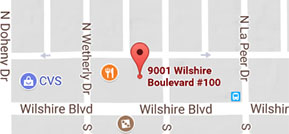Knee Arthroscopy
Knee arthroscopy is surgery that uses a tiny camera to look inside your knee. Small cuts are made to insert the camera and small surgical tools into your knee for the procedure.
Description
Three different types of pain relief (anesthesia) may be used for knee arthroscopy surgery:
- Local anesthesia. Your knee may be numbed with pain medicine. You may also be given medicines that relax you. You will stay awake.
- Spinal anesthesia. This is also called regional anesthesia. The pain medicine is injected into a space in your spine. You will be awake but will not be able to feel anything below your waist.
- General anesthesia. You will be asleep and pain-free.
- Femoral nerve block. This is another type of regional anesthesia. The pain medicine is injected around the nerve in your groin. You will be asleep during the operation. This type of anesthesia will block out pain so that you need less general anesthesia.
A cuff-like device may be put around your thigh to help control bleeding during the procedure.
The surgeon will make two or three small cuts around your knee. Salt water (saline) will be pumped into your knee to stretch the knee.
A narrow tube with a tiny camera on the end will be inserted through one of the cuts. The camera is attached to a video monitor that lets the surgeon see inside the knee.
The surgeon may put other small surgery tools inside your knee through the other cuts. The surgeon will then fix or remove the problem in your knee.
At the end of your surgery, the saline will be drained from your knee. The surgeon will close your cuts with sutures (stitches) and cover them with a dressing. Many surgeons take pictures of the procedure from the video monitor, You may be able to view these pictures after the operation so that you can see what was done.
Why the Procedure is Performed
Arthroscopy may be recommended for these knee problems:
- Torn meniscus. Meniscus is cartilage that cushions the space between the bones in the knee. Surgery is done to repair or remove it.
- Torn or damaged anterior cruciate ligament (ACL) or posterior cruciate ligament (PCL)
- Swollen (inflamed) or damaged lining of the joint. This lining is called the synovium.
- Kneecap (patella) that is out of position (misalignment).
- Small pieces of broken cartilage in the knee joint
- Removal of Baker’s cyst. This is a swelling behind the knee that is filled with fluid. Sometimes the problem occurs when there is swelling and pain (inflammation) from other causes, like arthritis.
- Some fractures of the bones of the knee




